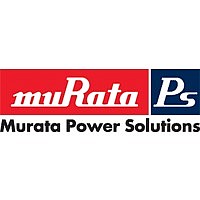GCM1885G1H820JA16D Murata Electronics North America, GCM1885G1H820JA16D Datasheet - Page 39

GCM1885G1H820JA16D
Manufacturer Part Number
GCM1885G1H820JA16D
Description
CAP CER 82PF 50V X8G SMD
Manufacturer
Murata Electronics North America
Series
GCMr
Datasheet
1.GCM0335C1ER30CD03D.pdf
(66 pages)
Specifications of GCM1885G1H820JA16D
Voltage - Rated
50V
Lead Style
*
Capacitance
82pF
Tolerance
±5%
Temperature Coefficient
X8G
Mounting Type
*
Operating Temperature
-55°C ~ 150°C
Applications
Automotive
Ratings
AEC-Q200
Package / Case
*
Size / Dimension
*
Thickness
*
Lead Spacing
*
Lead Free Status / RoHS Status
Lead free / RoHS Compliant
Features
-
!Note
• This PDF catalog is downloaded from the website of Murata Manufacturing co., ltd. Therefore, it’s specifications are subject to change or our products in it may be discontinued without advance notice. Please check with our
• This PDF catalog has only typical specifications because there is no space for detailed specifications. Therefore, please approve our product specifications or transact the approval sheet for product specifications before ordering.
sales representatives or product engineers before ordering.
!Note
4. Flux Application
1. An excessive amount of flux generates a large quantity of
2. Flux containing too a high percentage of halide may
5. Flow Soldering
o Set temperature and time to ensure that leaching of the
6. Washing
1. Please evaluate a capacitor by actual cleaning equipment
2. Unsuitable cleaning solvent may leave residual flux, other
7. Coating
1. A crack may be caused in the capacitor due to the stress
Notice
flux gas, which can cause a deterioration of Solderability.
So apply flux thinly and evenly throughout. (A foaming
system is generally used for flow soldering).
cause corrosion of the outer electrodes unless there is
sufficient cleaning. Use flux with a halide content of 0.1%
max.
and condition surely for confirming the quality and select
the applicable solvent.
foreign substances, causing deterioration of electrical
characteristics and the reliability of the capacitors.
of the thermal contraction of the resin during curing
process.
The stress is affected by the amount of resin and curing
contraction.
Select a resin with small curing contraction.
The difference in the thermal expansion coefficient
between a coating resin or a molding resin and capacitor
may cause the destruction and deterioration of the
capacitor such as a crack or peeling, and lead to the
deterioration of insulation resistance or dielectric
breakdown.
outer electrode does not exceed 25% of the chip end
area as a single chip (full length of the edge A-B-C-D
shown right) and 25% of the length A-B shown below as
mounted on substrate.
Continued from the preceding page.
• Please read rating and !CAUTION (for storage, operating, rating, soldering, mounting and handling) in this catalog to prevent smoking and/or burning, etc.
• This catalog has only typical specifications because there is no space for detailed specifications. Therefore, please approve our product specifications or transact the approval sheet for product specifications before ordering.
3. Do not use strong acidic flux.
4. Do not use water-soluble flux.
3. Select the proper cleaning conditions.
2. Select a resin that is less hygroscopic.
[As a Single Chip]
[As Mounted on Substrate]
(*Water-soluble flux can be defined as non rosin type flux
including wash-type flux and non-wash-type flux.)
3-1. Improper cleaning conditions (excessive or
Select a resin for which the thermal expansion coefficient
is as close to that of capacitor as possible.
A silicone resin can be used as an under-coating to buffer
against the stress.
Using hygroscopic resins under high humidity conditions
may cause the deterioration of the insulation resistance of
a capacitor.
An epoxy resin can be used as a less hygroscopic resin.
insufficient) may result in the deterioration of the
performance of the capacitors.
Notice (Soldering and Mounting)
B
C
A
B
A
D
Outer Electrode
C03E.pdf
37
10.5.20
1





















